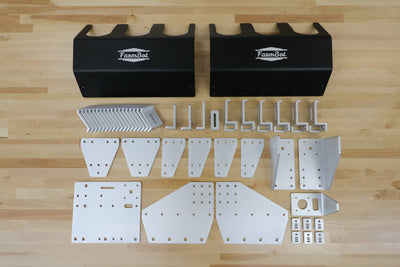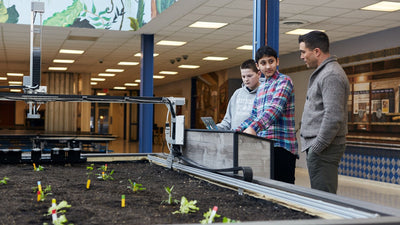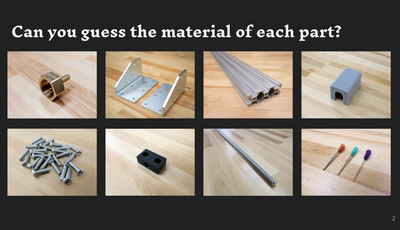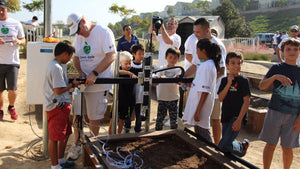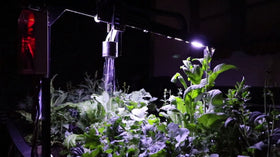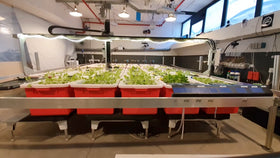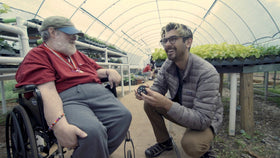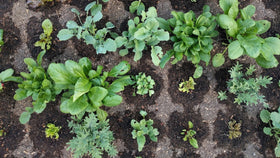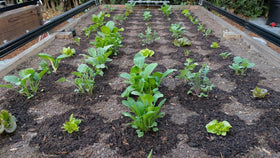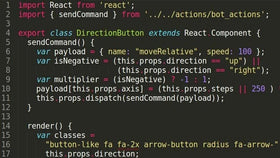As the November 1 deadline approaches for applying/re-applying for the
Shuttleworth Foundation Fellowship, I am looking back on the application that I sent in nearly 1 year ago allowing me to
start a fellowship back in March. What an amazing opportunity this has been for me so far (full post coming when the year is up in March of 2015), and I can't wait to submit my re-application by the end of this month - of which I will be posting openly here on the blog!
In the spirit of living in the open, here is my application from last year (minus letters of recommendation). Though the application has changed since then, I hope prospective future fellows can still learn from this. Feel free to email me with any questions!
Fellowship Application Form
Applicant name: Rory Aronson
Project name: FarmBot
Part 1: Essay questions
Please provide responses to the essay questions below. The responses to the questions should not exceed 2 typed pages in total. Please think about how your idea relates to technology, knowledge and learning and how your idea relates to openness when answering each section.
- Describe the world as it is. (A description of the status quo and context in which you will be working)
- What change do you want to make? (A description of what you want to change about the status quo, in the world, your personal vision for this area)
- What do you want to explore? (A description of the innovations or questions you would like to explore during the fellowship year)
- What are you going to do to get there? (A description of what you actually plan to do during the year)
The food production and distribution system is unsustainable, closed-source, and in peril. Industrial, mechanized monocrop food production relies on subsidies and petrochemicals to function, destroys the topsoil, and produces poor quality food. Additionally, the model is optimized for large-scales, centralized production, and heavy distribution, making the communities it serves more dependent and less in control. Small-scale, polycrop food production is the opposite, but requires massive amounts of expensive labor, a job that increasing numbers of people do not want. Lastly, gardening at home requires time, knowledge, and expertise to be successful, prerequisites which lead many to not even try.
A solution is needed that brings mechanized food production to the small-scale polycrop in an affordable, accessible, and open manner. Such a solution would allow healthy food to be grown affordably and sustainably in a distributed, local food production system. Making the solution open and accessible, such that the average person may afford, understand, implement, and operate the system will be key to system resiliency and mass appeal. Moreover, allowing, encouraging, and supporting system modification by the users and providing channels for sharing improvements will allow the best of everyone’s knowledge to benefit all.
FarmBot is my solution to the challenge. FarmBot is an open-source and scalable automated precision farming machine and software package. You may think of the hardware as a giant 3D printer, but instead of wielding a plastic extruder, its tools are seed injectors, watering nozzles, plows, sensors, and more. FarmBot is the first hardware to mechanize and automate a polycrop, and it does so by tending to each plant individually and in a precise manner. This means that every operation (and therefore the system as a whole) can be optimized in areas such as water, fertilizer, and pesticide usage, crop rotations, complimentary intercropping, attraction of beneficial insects, etc. In addition, outfitting the machine with sensors will allow for each operation to be completed in a data-driven and “smart” manner, further optimizing the system efficiency. Other benefits include complete computer control, 24/7 possible operation, the elimination of soil compaction, and greater possible plant density.
The FarmBot software is an open-source web-based software as a service solution allowing the user to graphically design their farm or garden layout, analyze data, and upload the generated numerical control code to their machine. A decision support system will aid the user in creating smarter decisions for their food production operation, enabling greater yields with less inputs. The interface will be designed for the lay person, allowing anyone with an Internet connection and a basic understanding of web apps to be able to use the hardware.
Complimenting the FarmBot software is OpenFarm, a free and open database for farming and gardening knowledge. Example data includes proper seed spacing, watering regimens, recommended soil compositions, etc for every soil type, climate zone, and time of year. This database will aid FarmBot users while they are designing their farm or garden, but also serve as a standalone service for other applications and users to access the data. OpenFarm may one day be described as the Wikipedia or Freebase for farming and gardening.
During the fellowship year, I plan to explore the following areas of the project. First, I want to find out at which scales the FarmBot hardware works best and is cost effective. I plan to build many different prototypes to explore different designs, materials, and scales. From there, I will begin optimizing the hardware through simplification, design for manufacturing, design for maintainability, and further iteration. All of the work will be documented on the project wiki so that others may build off of my work and collaborate on the designs.
Second, I will guide the software development team to bring the various code bases to working order, ensuring that the end products are user friendly, open and understandable, and fulfill the necessary design specifications and desired functionality.
Lastly, I will assemble a team of experts to add an initial round of plant data to OpenFarm, later spreading word to the public about the platform through targeted advertising efforts and publicity.
Part 2: Background information
Please provide responses to the background information questions and demographic data below. The responses to the questions should not exceed 2 typed pages in total. Some of the questions may not be applicable to your circumstances. If that is the case please indicate that.
- Have you started implementation of the idea? If so, please provide details on organisational structure, life cycle and progress.
- How have you funded your initiative in the past?
- Who are your current or potential key partners?
- Do you intend to implement the idea as a for-profit or not-for-profit initiative in the future?
- Where will you be based during a potential fellowship?
- Do you have an online presence? Please provide links.
- Does the idea/project have an online presence? Please provide links.
- How did you hear about the Shuttleworth Foundation Fellowship Programme?
I began implementation of the project by first writing a 53-page white paper describing the FarmBot technology and vision, as well as design details for an initial prototype. I published the paper in September, 2013 and have since been contacted bmy many interested people, raised a small amount of donated funds, gained an online following, and been interviewed several times. With my own money and the donations received, I have purchased materials for the initial prototype and began construction in my backyard which can be seen in my video.
Hardware collaboration is primarily done through the project wiki, consisting of the documentation and sharing of both designs and implementation. I have been slowly assembling a team of software developers from around the world to write the various code bases, with GitHub serving as our code repository and a Google Group for the primary communication channel. Additionally, I communicate directly with most of the developers through email correspondence, phone, and video calls.
Our online following is growing each day thanks in part to my continued posting and sharing of progress on all of the major social media platforms. We currently have over 500 followers between the social media profiles and the email newsletter.
Moving forward, I foresee my key partners being related project groups, the local MakerSpace, the local city farm and farmers, the student body and faculty at my local university, and the open-source community at large. The collaborative efforts from others are vital to continuing forward with the software, building, testing, and improving the hardware, creating the data, and documenting and sharing everything. These partners will provide me with the tools, hands, smarts, connections, and other resources needed to make this project a reality.
Once the technology progresses to a viable and fully functioning system, I envision creating a for-profit company that will utilize the open-source foundation, add the value of putting all of the materials into one box as a kit, and selling those kits with a guarantee to function and customer support. Meanwhile, all developmental improvements stemming from the business will still be documented and shared openly. The for-profit model will motivate more innovation from within the company and ultimately get the FarmBot technology into more people’s hands, bringing us closer to the vision. Additionally, the company will be open to fair competition from others because everyone will have equal free access to the base technology.
Part 3: Demographic Data
The Foundation collects demographics that are used to compile aggregate data for public reporting purposes. Your individual specific data is not made public and unless you are selected for a Fellowship will be deleted once reporting for an application cycle has been completed.
I discovered the Shuttleworth Foundation while browsing the Open Source Ecology wiki. I am a 22 year old male of Mexican and American descent with a BS in Mechanical Engineering from Cal Poly, San Luis Obispo, California. You can find out more about me through my blog, online resume, and social media profiles all accessible from
http://www.roryaronson.com. I intend to remain based in San Luis Obispo during the fellowship as I have a great community and resource pool here, as well as an optimal climate for test growing many different plants.
To see more about FarmBot online, visit
http://farm.bot. From here, you can find the white paper, blog, and the project wiki. From the wiki, you can find all of the social media profiles and our GitHub organization. Thank you for providing this opportunity and taking the time to read my application!


